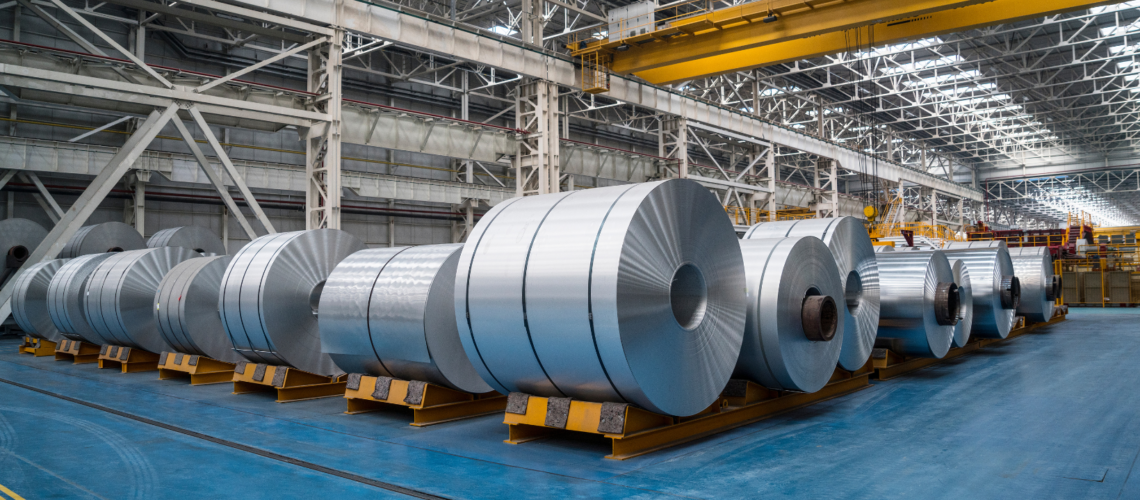Which Reigns Supreme in Metalworking?
The world of metals is vast, each possessing distinct characteristics impacting their processing. One common misconception prevalent in the industry is the ease of cutting and leveling aluminum compared to steel. Here, KORE Machinery delves deeper to shed light on the truths behind this belief.
Misconception Unveiled
A widespread notion is that aluminum usually demands less force to cut than steel, so it should also be easier to level.
The Actual Science
Any material must be stretched beyond its yield point to retain a permanent shape change. It will revert to its initial shape if it doesn’t surpass this yield.
A crucial understanding is that all steel varieties exhibit identical elasticity until their yield point is achieved. This means that under a specified load, they stretch uniformly.
Aluminum, in contrast, is inherently more elastic than steel. Hence, aluminum requires more permanent deformation elongation if both metals have the same yield strength.
This difference translates to machinery requirements as well. Deeper engagement of work rolls is imperative for aluminum, increasing the machine load, deflection, and power demands. The leveling process becomes exponentially challenging if we venture into more exotic materials, say titanium, which boasts even greater elasticity.
To quickly summarize, the softer nature of aluminum means it needs lesser tonnage for cutting. But when it comes to leveling, elasticity plays a pivotal role. The more elastic the material, the trickier its leveling becomes.

Distinguishing Between Aluminum and Steel
Aluminum claims the spot as the second most prevalent metallic element on our planet after silicon. Conversely, steel enjoys its status as the most sought-after alloy globally.
Both metals offer a plethora of applications. However, certain parameters can guide one in choosing the apt metal for specific tasks.
Comparing Applications of Steel and Aluminum
- Construction: Steel’s robustness earmarks it for foundational roles in construction, from skyscrapers to railways. Aluminum’s strength-to-weight benefit makes it an excellent choice for certain architectural designs.
- Energy: Steel finds applications in various energy sectors, from nuclear to wind power. Aluminum’s electrical properties make it preferable for transmission lines.
- Transportation: While steel forms the backbone of many transportation modes, aluminum’s dominance is noticeable in the aerospace sector.
- Packaging and Consumer Goods: Steel is pivotal in household appliances and construction hardware. Aluminum’s versatility shines in the packaging sector and electronic products.
Comparative Analysis:
- Resistance to Corrosion Aluminum reacts chemically similar to iron when exposed to oxygen, forming a protective layer. This protective layer of aluminum oxide prevents further deterioration. This characteristic spares it from needing additional paint or coatings against rust. On the other hand, carbon steel (excluding stainless steel) usually demands a protective coat of paint post-spinning. Galvanization, which uses zinc, often serves as a corrosion barrier for steel.
- Malleability: Aluminum takes the lead in terms of elasticity and flexibility. Its adaptability and seamless fabrication make it ideal for detailed and precise design implementations. Steel, being stiffer, might crack or tear if overly manipulated during processes like spinning.
- Strength Steel possesses an edge over aluminum in terms of hardness. While cold environments enhance aluminum’s strength, it remains more susceptible to dents and scratches than steel. Steel’s inherent properties make it one of the most robust industrial materials, resisting warping, bending, and heat damage.
- Weight Steel offers unmatched strength but at a density that’s 2.5 times greater than aluminum. While steel’s weight is advantageous in specific contexts, aluminum’s optimized structure and shape can provide almost equivalent reliability with just half the weight.
- Cost Implications Steel and aluminum prices remain volatile due to varying global demands and supply chains.
What’s Best For You?
Though steel often comes with a friendlier price tag than aluminum, the ‘best’ metal hinges on the job’s specific requirements. Assess the individual project needs and characteristics before making your metal selection.
Misconceptions often stem from half-truths or over-simplifications. However, a thorough understanding reveals the nuances. While aluminum might be gentler on the cutting machinery, it brings its own set of challenges when leveling is at play.
Intrigued by the intricacies of metal processing? Browse KORE Machinery’s extensive product range to find the best-fit solutions for all your metalworking needs. Dive deeper, explore more, and let KORE guide you through the metal realm.

